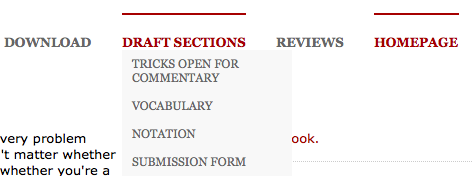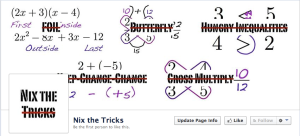I racked my brain for at least a week trying to come up with something interesting for this.
CCSS.Math.Content.6.G.1 Find the area of right triangles, other triangles, special quadrilaterals, and polygons by composing into rectangles or decomposing into triangles and other shapes; apply these techniques in the context of solving real-world and mathematical problems.
I had a few worksheets in my files on finding areas of irregular shapes. Boring. I even had a Math Hunt that I created last year (from a similar worksheet. But, that was pretty dry as well, the only difference is they get to walk around the room. It’s been a tough week, but these activities just weren’t inspiring me.
My students do love a good math hunt, but they also love being creative. Also, I didn’t just want them to find areas, I wanted to have them do the higher level skill of finding unknown measurements if they are given the area.
I decided to have my students create their own math hunt. The instructions were:
- Fold a sheet of paper in half, creating a half sheet card.
- Draw either a regular or standard shape on the bottom half of the inside of the card. Decorate this shape however you want (make it something), and then color it with colored pencils.
- Give your card a title on the outside cover.
- Find the area of your shape on the back of the card (show all steps).
After the pictures were drawn and decorated and the areas found, they switched cards with a partner to make sure they were correct. I ended up with cards in several different categories.
- Find an unknown measure given the area. These were for standard shapes like (circle, triangles, quadrilaterals)
- Find the area of irregular objects
- Find the area of an object where you have to subtract out another object.
-

-
Irregular Shape Card
-

-
Inside with measurements
-
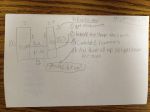
-
Answer on the back
-
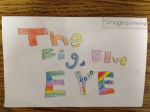
-
Subtracted Shape
-
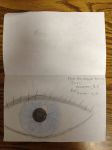
-
PIcture with measurements
-

-

-
Finding an unknown measure (radius)
-

-
Answer on the back
After all of the cards were finished, I had students partner up and check each other’s work. I created a partner check sheet for this to ensure that they were thorough.
Create A Shape Partner Check Sheet
I then taped them up all around the room. Students moved around the room, and got to pick one card of each type to work. After they worked one of each type, they got to try to pick one of each shape. I also created a foldable worksheet for this so that they would not forget to pick different kinds of shapes. Create A Shape Search WS
They enjoyed creating the cards and working with the other students creations as well. Plus, they got a variety of practice on different aspects of area.
One drawback to this activity was that I did not get enough triangles and trapezoids. If you do this activity, I would randomly assign students a shape so that you are sure to get a good variety.


